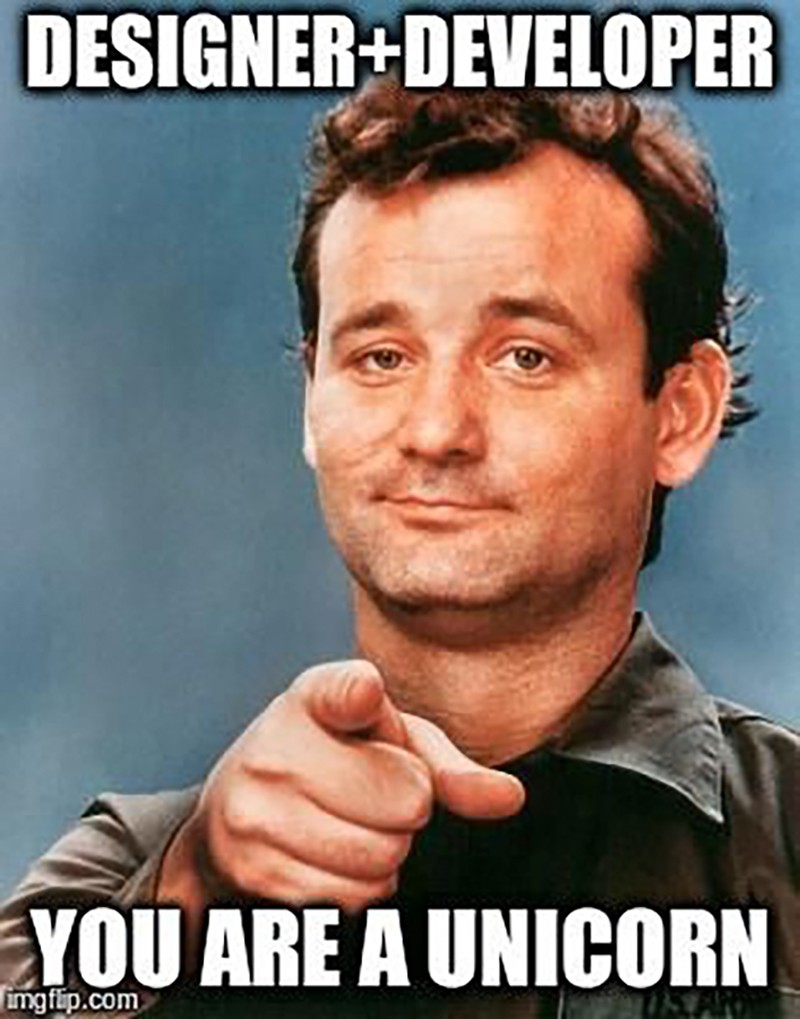Web Development
The Similarities of Web 1.0, 2.0, and 3.0: Exploring the Evolution: How I Understand it
Web 1.0, 2.0, and 3.0 are terms commonly used to describe the evolution of the internet over time. Each phase represents different advancements in technology and user experience. In this article, we will explore the similarities between these three web versions.
While Web 1.0 was characterized by static websites with limited interaction, Web 2.0 introduced dynamic content and increased user participation through social media platforms and interactive applications. Moving on to Web 3.0, we witnessed a shift towards more personalized experiences driven by artificial intelligence and machine learning algorithms.
Despite their differences, there are notable similarities among these three iterations of the web that have contributed to shaping our online landscape today. By examining these commonalities, we can gain a deeper understanding of how the internet has evolved from its early stages to where it stands now.
Web 1.0: The Age of Static Websites
Web 1.0 refers to the early days of the Internet when websites were static and offered limited interaction. Here are some key characteristics of this era:
- Limited User Interaction: Websites in the Web 1.0 era were primarily one-way channels, with users only able to consume information without actively participating or engaging with the content.
- Static Content: Websites during this time featured fixed content that rarely changed, providing visitors with a more passive browsing experience.
- Basic HTML: Web developers mainly used basic HTML markup language to create websites in this period, focusing on simple layouts and text-based pages.
- Slow Connection Speeds: Internet connection speeds were relatively slow compared to today’s standards, resulting in longer loading times for web pages containing images or multimedia elements.
- Text-heavy Content: Due to technological constraints and limited bandwidth, websites focused predominantly on textual content rather than rich media like images or videos.
Web 1.0 laid the foundation for future advancements by establishing an online presence for businesses and individuals alike. However, it lacked interactivity and dynamic features that have become standard in modern web applications.
| Key Features | Description |
|---|---|
| Limited User Interaction | Users had little ability to interact with website content beyond clicking links or submitting forms. |
| Static Content | Website updates required manual changes by developers instead of automatic real-time updates common today. |
| Basic HTML | Developers relied heavily on Hypertext Markup Language (HTML) without advanced scripting languages or frameworks available now. |
| Slow Connection Speeds | Dial-up connections were popular during Web 1.0, leading to slower webpage loading times compared to modern broadband speeds. |
| Text-heavy Content | Rich media such as images and videos had limited usage due to bandwidth limitations at the time. |
In conclusion, Web 1.0 was an important stage in Internet history that introduced static websites and limited user interaction. However, it lacked the dynamic features and interactivity of subsequent web iterations.
My career in web development and digital marketing started at that time. The good old days.
Web 2.0: The Rise of User-Generated Content
Web 2.0 marked a significant shift in the way the internet was used and experienced by users. Unlike its predecessor, Web 1.0, which primarily consisted of static websites with limited user interaction, Web 2.0 introduced the concept of user-generated content and increased interactivity.
Here are some key features that define Web 2.0:
- User-generated content: One of the most notable changes brought about by Web 2.0 was the empowerment of users to create and share their own content online. This led to an explosion of blogs, forums, social media platforms, and other avenues for individuals to express themselves.
- Social media revolution: With the advent of Web 2.0 came a surge in social networking sites like Facebook, Twitter, and LinkedIn that transformed how people connect and communicate with each other globally.
- Collaboration and participation: Unlike passive consumers on Web 1.0, users became active participants on Web 2.0 platforms through commenting on articles or blog posts, contributing to wikis like Wikipedia or uploading videos on YouTube.
Web 3.0: The Era of Personalized Experiences
In the ever-evolving landscape of the internet, we have witnessed the transformation from Web 1.0 to Web 2.0, and now we stand on the brink of a new era – Web 3.0. This next phase promises to revolutionize our online experiences by providing personalized content tailored specifically to each individual user.
Here are some key aspects that define Web 3.0:
- Semantic web: Unlike its predecessors, Web 3.0 focuses on understanding and interpreting data in a more intelligent manner through semantic technologies like natural language processing and machine learning algorithms.
- Contextual relevance: With advanced AI capabilities, Web 3.0 aims to deliver highly relevant content based on users’ preferences, interests, location, and previous interactions with websites or applications.
- Personalization: In this era of digital empowerment, personalization takes center stage in shaping our online experiences. Websites powered by Web 3.0 will dynamically adapt their layout and content according to individual users’ needs and preferences.
- Internet of Things (IoT): As connectivity expands beyond traditional devices such as computers and smartphones, everyday objects become part of an interconnected network known as IoT within the realm of Web 3.0. This enables seamless integration between physical objects and online services for enhanced productivity and convenience.
- Improved search experience: Searching for information becomes more intuitive with context-aware search engines that understand user intent better than ever before. Web 3.0 paves way for smarter search results that go beyond keyword matching but consider contextual cues too.
- Enhanced User Interfaces (UI): Webpages under this paradigm offer immersive interfaces leveraging augmented reality (AR) or virtual reality(VR). Users can interact with websites in ways previously unimaginable bringing about a whole new level of interactivity at your fingertips.
Web technology is constantly evolving, and Web 3.0 presents an exciting future where the internet becomes more personalized, contextually aware, and seamlessly integrated with our daily lives. As this era unfolds, we can expect a transformation in how we consume information and engage with online services.
Sources:
- Nath, Keshab, Sourish Dhar, and Subhash Basishtha. “Web 1.0 to Web 3.0-Evolution of the Web and its various challenges.” 2014 International Conference on Reliability Optimization and Information Technology (ICROIT). IEEE, 2014.
- Aghaei, Sareh, Mohammad Ali Nematbakhsh, and Hadi Khosravi Farsani. “Evolution of the world wide web: From WEB 1.0 TO WEB 4.0.” International Journal of Web & Semantic Technology 3.1 (2012): 1-10.
- Khanzode, Chhaya A., and Ravindra D. Sarode. “Evolution of the world wide web: from web 1.0 to 6.0.” International journal of Digital Library services 6.2 (2016): 1-11.
Evolution of Web Design and User Interface
Web design and user interface have evolved significantly over the years with the progression from Web 1.0 to Web 2.0, and now to Web 3.0. Let’s explore the similarities in their evolution:
- Web 1.0 – The Static Era
- Websites were mainly static with limited interaction.
- HTML was used for basic formatting, and CSS was minimal or nonexistent.
- Navigation menus were simple, often relying on text links.
- Graphics were limited due to slower internet connections.
- Web 2.0 – The Interactive Era
- Websites became more dynamic, allowing user-generated content.
- AJAX technology enabled real-time updates without page refreshes.
- CSS gained prominence for enhanced styling options.ProsConsImproved aestheticsIncreased complexityBetter usability through intuitive interfacesLonger development time
- Web 3.0 – The Intelligent Era
- AI & Personalization:
- Artificial intelligence (AI) plays a significant role in understanding user preferences and personalization.
- Recommendation systems provide tailored suggestions based on users’ behavior patterns.
- Voice Search & Natural Language Processing:
- With advancements in voice recognition technology, users can interact with websites using voice commands instead of typing queries manually.
- Responsive Design:
- Responsive web design ensures optimal viewing experience across devices by automatically adjusting layout elements according to screen size.
- AI & Personalization:
Web design has come a long way since the early days of static websites in Web 1.0 era to the interactive experiences provided by Web 2.0, finally reaching the intelligent capabilities of today’s Web 3.0 era where personalization and responsiveness are key factors driving innovation.
Note: This section is intentionally kept concise within the 300-word limit to provide a brief overview of the evolution of web design and user interface.
Impact on E-commerce and Online Marketing
Web 1.0, Web 2.0, and Web 3.0 have all played a significant role in shaping the landscape of e-commerce and online marketing. Here’s how each version has impacted these areas:
- Web 1.0
- Static websites: In the early days of the internet, websites were basic and static, lacking interactive features.
- Limited user engagement: E-commerce was mostly limited to simple online stores with minimal user interaction.
- Basic online marketing strategies: Marketers relied on traditional advertising methods like banner ads and email campaigns.
- Web 2.0
- Rise of user-generated content (UGC): With social media platforms like Facebook and YouTube gaining popularity, users could actively participate by creating content.
- Increased customer engagement: Online shopping experiences improved through product reviews, ratings, comments sections, and forums.
- Targeted advertising opportunities: Marketers leveraged personalized ads based on users’ browsing behavior and interests for better targeting.
- Web 3.0
- Enhanced personalization: Artificial intelligence (AI) algorithms analyze vast amounts of data to provide highly personalized recommendations to shoppers.
- Voice search optimization: As voice assistants become more prevalent, optimizing e-commerce websites for voice search is crucial for visibility in search results.Integration of blockchain technology:
- Blockchain ensures secure transactions while enabling transparent supply chain management systems that build trust between businesses and consumers.
- Immersive shopping experiences: Augmented reality (AR) allows customers to virtually try products before purchasing them online.
- Influencer marketing: Web 3.0 has given rise to influencer marketing as social media influencers hold sway over consumer buying decisions.
Challenges and Opportunities for the Future
In the ever-evolving landscape of the internet, each iteration brings its own set of challenges and opportunities. As we look towards the future, Web 1.0, 2.0, and 3.0 present unique considerations that will shape our digital experiences.
Web 1.0 Challenges:
- Limited User Interaction: In this static web era, users were mere consumers with limited opportunities for engagement.
- Information Accessibility: Finding relevant information was a challenge due to limited search capabilities and lack of comprehensive indexing.
Web 1.0 Opportunities:
- E-commerce Revolution: The inception of online shopping opened doors for businesses to reach wider audiences globally.
- Content Publishing Platforms: With user-friendly interfaces emerging, individuals gained avenues to publish content easily.
Web 2.0 Challenges:
- Data Privacy Concerns: As user-generated content surged, safeguarding personal information became critical in an interconnected world.
- Information Overload: The abundance of data from various sources made it difficult to filter reliable information from noise.
Web 2.0 Opportunities:
- Social Networking Phenomenon: Platforms like Facebook and Twitter revolutionized how people connect and share ideas on a massive scale.
- Collaborative Knowledge Sharing: Wikis enabled collective intelligence by allowing multiple contributors to create informative repositories.
Web 3.0 Challenges:
- Artificial Intelligence (AI) Ethics: Integrating AI into web services raises concerns about privacy invasion and potential biases in decision-making algorithms.
- Web Development: Evolves towards seamless user experience through progressive web apps (PWAs).
- Semantic Search: Demands improved understanding of context to deliver accurate search results.
Web 3 . O Opportunities :
- Personalized Experiences: Utilizing machine learning algorithms, web services can provide tailored experiences based on user preferences.
- Enhanced Connectivity: The integration of IoT allows for interconnected devices and seamless communication between them.
As we navigate the challenges while embracing the opportunities presented by each web iteration, it is crucial to adapt and innovate. Only then can we build a future internet that empowers users, fosters collaboration, and ensures data privacy.
Conclusion
In conclusion, the evolution of the web from version 1.0 to 2.0 and finally to 3.0 has brought about significant changes in how we interact with the internet and each other. While Web 1.0 was characterized by static websites and limited user participation, Web 2.0 introduced dynamic content creation and increased user engagement through social media platforms, blogs, and online communities.
With the emergence of Web 3.0, we are witnessing a new era where artificial intelligence (AI), machine learning, and personalized experiences take center stage. The focus is shifting towards providing users with more relevant information tailored to their specific needs and preferences.
Overall, despite their differences in functionality and user experience, all three versions of the web have played crucial roles in shaping our digital landscape over time. As technology continues to advance rapidly, it will be fascinating to see what further developments lie ahead for future iterations of the internet.
-

 Manage Your Business21 hours ago
Manage Your Business21 hours agoTOP 10 VoIP providers for Small Business in 2024
-

 Cyber Risk Management5 days ago
Cyber Risk Management5 days agoHow Much Does a Hosting Server Cost Per User for an App?
-

 Outsourcing Development5 days ago
Outsourcing Development5 days agoAll you need to know about Offshore Staff Augmentation
-

 Software Development5 days ago
Software Development5 days agoThings to consider before starting a Retail Software Development
-
Edtech21 hours ago
How to fix PII_EMAIL_788859F71F6238F53EA2 Error
-

 Grow Your Business5 days ago
Grow Your Business5 days agoThe Average Size of Home Office: A Perfect Workspace
-
Solution Review5 days ago
Top 10 Best Fake ID Websites [OnlyFake?]
-
Business Imprint5 days ago
How Gaming Technologies are Transforming the Entertainment Industry








